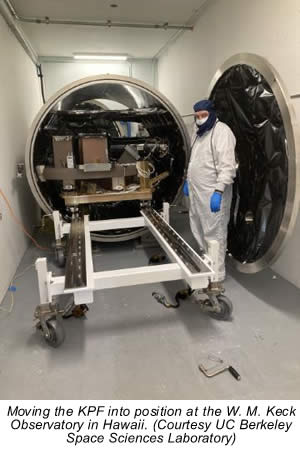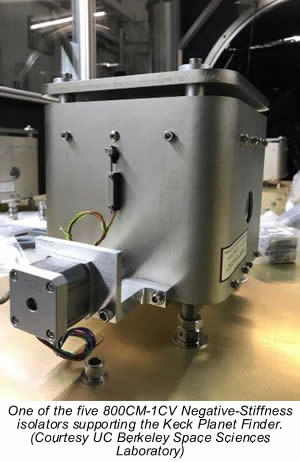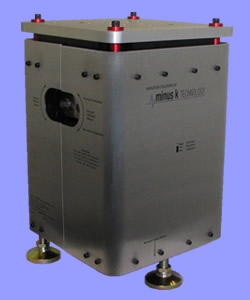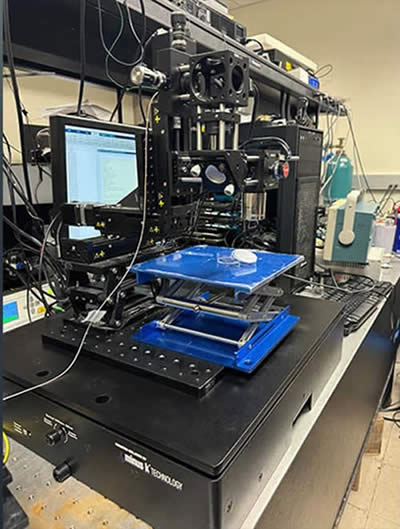|
|
Newsletter February 2025 | Menu of
Newsletters
|
Astronomers have confirmed more than 5,000
exoplanets orbiting distant stars. There are a few aspects that are needed to
characterize an exoplanet. One is the size of the planet, and the other is the
mass of the planet.
Space-based missions, such as the Transiting
Exoplanet Survey Satellite (TESS) launched in 2018, find exoplanets through
events called transits, where a planet periodically blocks part of the light
from its host star. These space-based missions do the precision photometry that
is used to derive both the size of the planet - how big it is physically, the
planet's diameter - and how far away from the star it is. TESS finds the most
promising exoplanets orbiting our nearest and brightest stars, Earth-sized and
super-Earth-sized exoplanets which are no larger than twice the size of
Earth.
|

|
Once space-based observations of
an exoplanet are made, follow-up ground-based measurements are needed to
characterize the mass of the planet. This is achieved by determining how fast
the planets star is moving, and its radial velocity, and needs to be performed
with extreme precision, which to date has only been demonstrated from a
ground-based location. Once measurements of the size and the mass of the planet
are known, its density can be determined, which enables an assessment of the
planets composition - whether it is a gas giant or a small rocky planet, or
something in between.
Keck Planet Finder
Ground-based radial
velocity (RV) measurements are made from dozens of observatories around the
world. Many are located at smaller facilities where routine observation is
possible. To reach the precision to characterize earth-like planets, RV
measurements need to be made from large telescopes at exquisite observing
sites. |
Until recently, many ground-based radial
velocity measurements were performed with the High-Resolution Echelle
Spectrometer (HIRES), located at the W.M. Keck Observatory (WKMO) on the summit
of 13,796-ft Mauna Kea in Hawaii. HIRESs precision measurements can spot stars
moving back and forth or wobbling, at a speed of about 200
cm/second.
|
But scientists wanted to push
the technology further to permit locating even smaller planets that exert a
weaker tug on their host stars. A planets gravity causes this solar wobbling,
very slightly affecting the movement of the star. More massive planets with
higher gravity are easier to detect than smaller rocky planets.
This led
to the development of the Keck Planet Finder (KPF), a next-generation optical
spectrometer, also located at the W. M. Keck Observatory in Hawaii, that saw
first light in November 2022. Like HIRES, KPF was designed to discover and
characterize extrasolar planets using the radial velocity method, but with much
higher precision, capable of detecting stellar motions of only 30
cm/second
First envisioned in 2014, KPF has been jointly designed and
built by the University of California, Berkeley Space Sciences Laboratory (SSL)
in Berkeley, California, and the California Institute of Technology in
Pasadena, California.
|

|
Since its inception in 1959, SSL
has participated in over 50 NASA space science missions, including the Apollo,
Mars, Discovery, and Explorer programs, as well as many international space
missions, said Kodi Rider, project manager of Keck Planet Finder at UC Berkeley
Space Sciences Lab. KPF is focused to not only find smaller rocky planets, but
ones in the habitable zones of their stars. Its precision enables unprecedented
measurements of the masses, orbits, and compositions of smaller
planets.
Thermal Stability
KPF was designed from the ground
up to track the spectral fingerprints of stars to better than one
part-per-billion precision. This scale of measurement represents a significant
technological challenge and required every layer of the KPF system to be
optimized to maximize performance...
Full
article... |
|
|
|
|
|
|
Featured Product: SM-1 Large
Capacity, Low Frequency Vibration Isolators
- Vertical natural frequency of 1/2
Hz or less can be achieved over the entire load range.
- Horizontal natural frequency is
load dependent. 1/2 Hz or less can be achieved at or near the nominal
load.
- See typical transmissibility curve
Performance
for the SM-1.
 Minus K's
SM-1
is low frequency vibration isolator for weight loads from 500 to 4200 lbs. and
1/2 Hz performance vertical and horizontal.
Minus K's
SM-1
is low frequency vibration isolator for weight loads from 500 to 4200 lbs. and
1/2 Hz performance vertical and horizontal.
The SM-1 negative-stiffness
isolator is the basic building block of the
FP-1
Floor Platform and other heavy multiple isolator systems. They require no air
or electricity.
This isolator has the same basic features of our all
passive, negative-stiffness, manually-adjustable bench top isolators. It offers
our very-low frequency isolation performance for payloads of many thousands of
pounds.
SM-1
isolator can be used alone or with any number of additional units to achieve
higher capacity systems. They can be arranged in many geometrical
configurations to suit your application.
The
SM-1
isolators can also be placed on pedestals to increase the height of the
isolation system.
Pricing &
Specifications
|
|
|
Visualization
of Tracheal Ciliary Patterns using Spectrally Encoded Interferometric
Microscopy
|
A spectrally encoded
interferometric microscopy system, combined with phase resolved Doppler optical
coherence tomography, and supported by Negative-Stiffness vibration isolation
captures and processes en face images of human ciliary beating in real-time.
|

Beckman Laser Institute’s spectrally encoded
interferometric microscopy (SEIM) system with PR-D technology. Image courtesy
Beckman Laser Institute, UC Irvine
|
Cilia, small, slender, hair-like structures
present on the surface of all mammalian cells, play a major role in locomotion
and are involved in mechanoreception. Ciliary motion in the upper airway is the
primary mechanism by which the body transports foreign particulates out of the
respiratory system to maintain proper respiratory function.
Ciliary
motion plays a critical role in the overall respiratory health of the upper
airway. Cilia beat at a native frequency, and in a synchronized pattern, to
continuously transport foreign particulate trapped in a layer of mucous out of
the upper airway.
The ciliary beating frequency (CBF) is often disrupted
with the onset of disease as well as other conditions, such as changes in
temperature or in response to drug administration. Disruption of ciliary motion
can lead to severe respiratory diseases and compromised respiratory
function.
Measuring CBF is a technical challenge and difficult to
perform in vivo. Current imaging of cilia motion relies on microscopy and
high-speed cameras which cannot be easily adapted to in vivo
imaging.
Phase-contrast microscopy (PCM) is the standard for measuring
CBF but has limitations. PCM does not permit appreciation of how CBF varies
across the complex landscape of the nasal vault and sinus tissues.
Additionally, optical coherence tomography (OCT) has proven to be a powerful
imaging modality capable of visualization of ciliary activity, but its field of
view is limited.
Spectrally encoded interferometric
microscopy
A team of scientists and engineers at the Chen F-OCT Group,
part of the Beckman Laser Institute of the Department of Biomedical Engineering
at the University of California, Irvine (UCI), have designed a system capable
of overcoming these limitations.
.
Previously, the group developed a
phase resolved Doppler optical coherence tomography (PR-D-OCT) system that was
able to obtain lateral cross-sectional images of cilia and cilia movement in
real-time. The inventors realized the need to observe the surface dynamics of
cilia over time and spatially, so they developed a spectrally encoded
interferometric microscopy (SEIM) system with PR-D technology. As a result,
fast, high-resolution en face images of human CBF can be captured and processed
in real-time. Additionally, the integration of PR-D-OCT with PR-D-SEIM provides
a multidimensional view of cilia.
.
SEIM has emerged as a high-speed,
high-resolution methodology, allowing for visualization of both temporal and
spatial ciliary motion patterns across the surface of upper airway tissues, as
well as propagation of metachronal wave, says Zhikai Zhu, Ph.D. candidate with
the Chen F-OCT Group. SEIM can detect displacement on the nanometer scale at a
kilohertz frame rate..
.
When coupled with a wavelength-swept laser and a
spectral disperser, SEIM can image tissue en face, Zhu explains. SEIM uses a
phase-resolved Doppler (PR-D) algorithm to measure and map the CBF within an en
face region, providing insight into the changes in CBF across tissue
surfaces.
Need for vibration isolation
Since we are imaging
cilia tissue that is in motion, we need a stable environment to produce
reliable images, Zhu continues. Without vibration isolation, reliable imaging
from our SEIM system is sporadic. Our lab is adjacent to a heavy foot traffic
area, creating vibrations that affect our signals, Zhu adds. Our need to
isolate these ambient vibrations is critical.
.
The F-OCT Laboratory
selected Negative-Stiffness vibration isolation for its SEIM system. Introduced
in the mid-1990s by Minus K Technology, Negative-Stiffness vibration
isolation has been widely accepted for vibration-critical applications, largely
because of its ability to effectively isolate lower frequencies, both
vertically and horizontally.
Full
article... |
|
|
|
|
|
|
|
Previous
Newsletters
|

 |
|
|
